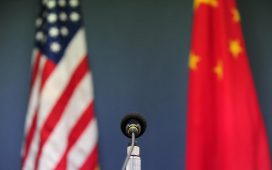
In Q1FY23, India’s CAD recorded a deficit of $17.9 billion, or 2.1 per cent of GDP, in Q1FY23.
It has widened from $1.3 billion, or 0.2 per cent of GDP, seen in the preceding quarter. “The widening of CAD on a quarter-on-quarter basis was primarily on account of a higher trade deficit coupled with a lower surplus in net services and decline in private transfer receipts,” the RBI said in a statement.
India’s CAD had narrowed in the January-March quarter of the previous financial year, the lowest in seven quarters.
Data released earlier in September showed that India’s trade deficit widened to the most since October last year as higher oil prices and resilient domestic demand inflated the import bill. The gap between exports and imports stood at $24.16 billion in August, data showed. A widening trade balance has the potential to lead to an expansion in the current account deficit, which is a broad measure for trade in goods and services.
The July-September quarter will see a “substantial widening” of the deficit due to the trade balance worsening sequentially, oil and higher core imports rising, and services exports slowing further, news agency Reuters quoted Madhavi Arora, lead economist at Emkay Global Financial Services as saying. The second-quarter CAD/GDP ratio could range from 2.4% to 2.6%, more than double that of the first quarter, Arora estimated.India’s foreign exchange reserves saw an accretion of $24.4 billion on a BoP basis, compared to $4.6 billion in the first quarter of the previous financial year.The net foreign direct investment in India decreased to $5.1 billion from $13.4 billion seen a year ago while net foreign portfolio investments saw inflows of $15.7 billion in Q1 from net outflows of $14.6 billion a year ago in the same period.
The RBI noted that India’s net services receipts decreased sequentially due to a decline in exports of computer, travel and business services even as it remained higher on an annual basis.
Net external commercial borrowings to India registered an inflow of $ 5.6 billion in Q1FY24 after registering an outflow of $2.9 billion a year ago.










